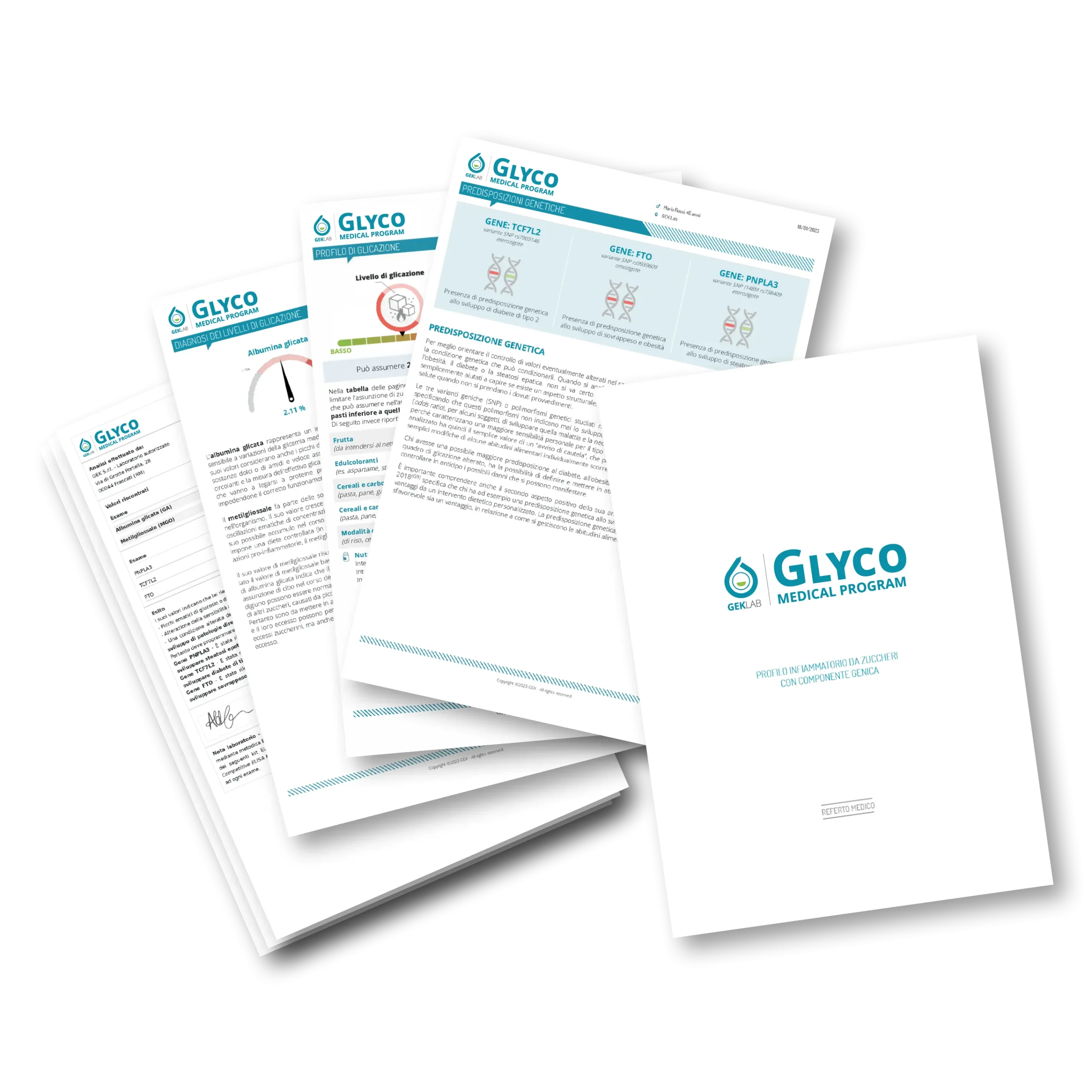
Nutrition and sports form an inseparable duo, as athletic performance is fueled by a well-balanced diet. While training and dedication are essential for excelling in any sport, the food we consume and how we consume it have a direct impact on performance, muscle recovery, endurance, recovery speed, and training consistency.
In particular, innovative knowledge about sugar metabolism has highlighted that methylglyoxal—an oxidative substance formed when a person consumes an excessive amount of sugars, carbohydrates, fruit, polyols, and/or alcohol—drastically reduces muscle energy production. It slows down ATP production and significantly diminishes the training effect of physical exertion. To varying degrees, any athlete can be affected by this phenomenon.
In particular, innovative knowledge about sugar metabolism has shown that methylglyoxal (an oxidizing substance that forms when a person consumes an excessive amount of sugars, carbohydrates, fruit, polyols, and/or alcohol) drastically reduces muscle energy production.
Nutrition and sports interact in many areas, but a well-balanced, personalized diet has a particular influence on three key factors:
- Increases the quality and intensity of performance, leading to improved endurance during physical effort.
- Reduces recovery time.
- Significantly decreases the likelihood of non-traumatic muscle injuries and musculoskeletal pain caused by functional overload, also shortening post-injury recovery time.
In all these factors, inflammation plays a crucial antagonistic role, negatively affecting the final outcome by interfering at multiple metabolic and biochemical levels.
Essential nutrients
The first step in understanding the interaction between nutrition and sports is to review the essential macronutrients. For an athlete, it is crucial to consume all nutrients correctly and in a balanced way within a single meal, as each plays a fundamental and specific role.
Carbohydrates represent the energy substrate that the body draws from—they are the fuel needed to perform physical activity.
Proteins are the fundamental building blocks of muscle fibers and are important both for performance and recovery.
Fats, which make up our reserves, help regulate the release of energy over time and come into play once the muscle sugar stores, in the form of glycogen, are depleted.
Fats also have an important anti-inflammatory action: for example, the inflammatory modulation exerted by omega-3 and omega-6 fatty acids, found in fatty fish (salmon, tuna, herring) and oilseeds (flaxseeds, walnuts, almonds, and pistachios).
Fiber helps lower the glycemic load of a meal by slowing down the absorption of sugars, but it also has a positive effect on gut flora and, therefore, on the overall immune system. An active and well-functioning immune system leads to better recovery abilities.
Equally important are micronutrients, such as vitamins and minerals, especially magnesium, sodium, potassium, zinc, and vitamin D.
Water
L’idratazione è un fattore cruciale da considerare quando si parla di alimentazione e sport. L’acqua è fondamentale non solo per mantenere bilanciata la temperatura corporea ma anche per ridurre l’insorgenza di crampi, favorire il corretto assorbimento dei nutrienti e permettere alle cellule di svolgere la propria funzione di produzione di energia in modo ottimale. La stanchezza è spesso uno dei primi segnali di disidratazione.
Be careful with simple sugars.
The topic of simple sugars and glycation levels is one in which misjudgments are most often made when discussing nutrition and sports.
If it is true that the immediate function of sugar is to provide a quickly usable source of energy, the downside is rarely considered: if the available sugar is depleted too quickly, it triggers a significant state of hypoglycemia, leading to fatigue, mental fog, and reduced capacity for exertion. Additionally, the glycemic spike fuels the process of glycation, in which the body’s proteins are affected by sugars, altering their structure and function. One of the byproducts of glycation is methylglyoxal, a highly oxidative molecule that, as mentioned earlier, makes it difficult for the cell to produce ATP—the molecule responsible for energy release. This results in a lack of adaptation to training, especially endurance training, leading to an acute decline in performance.
It is therefore important to avoid snacks consisting only of sugars or fruit, as well as gels with medium-to-fast-absorbing sugars (such as maltodextrins), especially in the pre-race phase.
There are many “sugar-free” sports bars on the market that are quite popular, but their sweet taste should raise a red flag. This sweetness comes from the presence of polyol sweeteners (such as erythritol or xylitol), which, although not directly responsible for glycemic spikes, also contribute to increased methylglyoxal levels. As we have seen, an athlete who is mindful of performance and recovery will want to keep this under control.
The mantra to keep in mind when considering the relationship between nutrition and sports is “full stores and an empty stomach”, as this is the optimal condition for training. In this way, the nutrients stored in the body will be gradually released during performance, based on each athlete’s needs. Keeping the stomach empty prevents training with an inadequate blood supply, as the digestive process redirects blood flow from the muscles to the digestive system.
If you experience a decline in performance and a poor response to training, it may be beneficial to undergo a Glyco Medical Program, which analyzes the percentage of glycated albumin (AG) and methylglyoxal (MGO) levels in the body. These measurements are currently conducted in only a few top-tier laboratories, including GEK Lab. In particular, assessing methylglyoxal levels can reveal inflammatory activity that impairs energy production efficiency.
What to eat before and after sports performance?
A balanced yet easily digestible meal, consumed at least two hours (three is even better) before performance, is undoubtedly the best choice. Options include whole wheat pasta with chicken and zucchini, a salad with potatoes, oily fish, and greens, or an omelet with eggs, ham, and brown rice, served with cherry tomatoes. In all three cases, it’s advisable to add raw olive oil to the vegetables.
After training, it is crucial to replenish the muscle glycogen lost during physical activity. This means incorporating carbohydrates, proteins, and vegetables to restore vitamins and minerals.
If you’re craving a wholesome dessert (avoid highly processed industrial sweets as much as possible), this is the perfect time to enjoy it. After a workout, muscle fibers are particularly receptive to sugars, reducing the risk of blood sugar spikes or excessive insulin stimulation.
The same goes for pizza—delicious and nutritious but high in carbohydrates—making it a much better choice after exercise or training.
And what about supplements? They can support performance and certainly play a role in the broader discussion of nutrition and sports, but they must be chosen carefully. We’ll explore this topic in a future article.
Edited by The scientific editorial team GEK Lab





